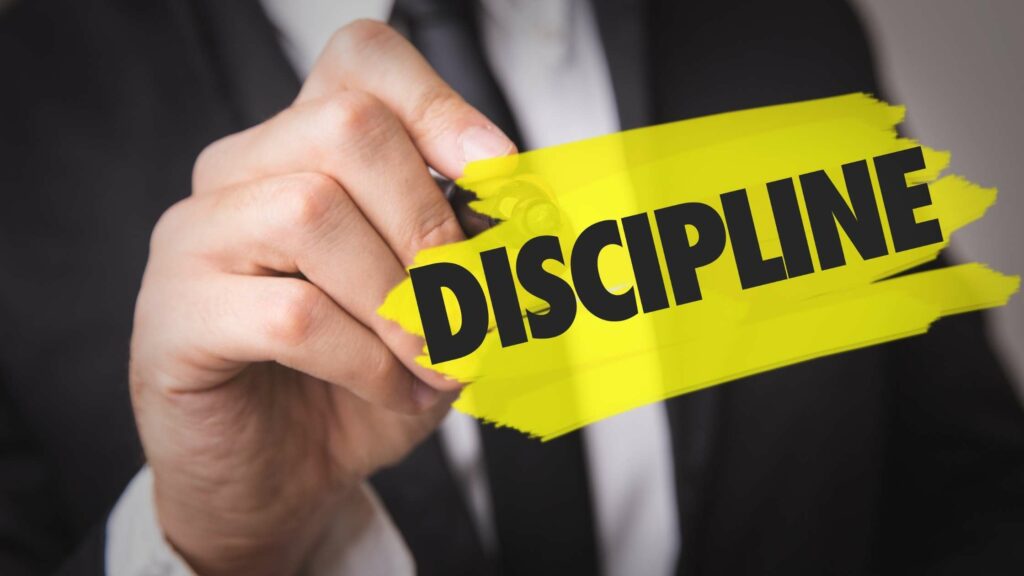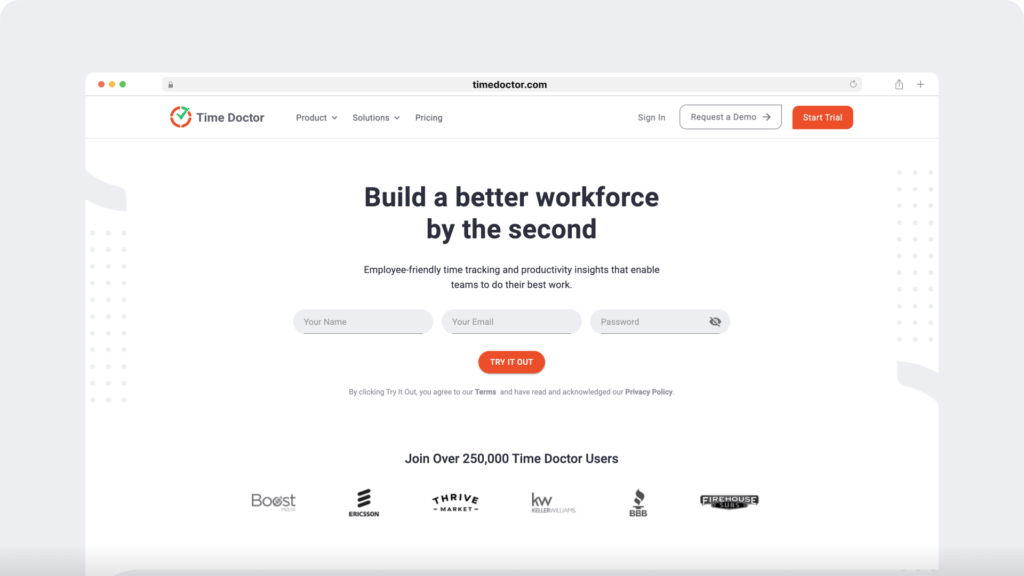Searching for the best ways to maintain workplace discipline at your organization?
Ensuring that you have an efficient workplace disciplinary process in place is one of the easiest ways to keep things on track. It’ll keep your employees focused, give your managers an idea of how to deal with issues, and create transparency in your organization.
But what are the best ways to maintain workplace discipline?
In this article, we’ll help you choose the best discipline method for your organization. We’ll also guide you on how to create a positive approach to workplace discipline to ensure that your employees comply with your processes.
Table of Contents
- Why is workplace discipline important?
- What are the various workplace discipline methods?
- The best approach to workplace discipline
- 3 tips to maintain a disciplined workplace
Let’s get started.
Why is workplace discipline important?
While this may seem obvious, workplace discipline has benefits that extend beyond simply keeping your employees focused.
Creating common workplace discipline standards results in:
- All your employees following the same rules – thereby establishing uniformity and equality in your workplace
- Managers knowing what to look out for and what to do while stepping in for disciplinary reasons
- Employees abiding by various safety and security rules that could put them and your company at risk if disobeyed
What are the various workplace discipline methods?
Now that you know why enforcing workplace discipline is important, let’s go over the various discipline options you have at your disposal.
Ideally, avoid discipline methods that start and end with drastic measures like firing someone.
Why?
An extreme corrective action like this will create a fear-based environment in the office. And according to research, this can stress and demotivate your workforce, affecting their work performance in the long run.
Additionally, by choosing to fire employees as your go-to solution, you’re missing out on the opportunity to educate them on what they were doing wrong, understand why they did it and help them avoid doing it in the future.
That’s why it’s important for you to focus on developing a discipline system that creates a healthy and positive work environment in the workplace.
Some common discipline methods are listed below:
1. Progressive discipline system
This is one of the most popular discipline methods used around the world.
What is it?
Instead of penalizing your employee for a small disciplinary issue, the problem is rectified by “progressively” escalating the disciplinary measure in a series of steps.
For example, for an employee’s first disciplinary measure, you can start with a verbal warning, then progress to a written warning and other steps such as temporary pay cuts and suspensions.
If none of the steps fail to correct employee conduct or bring any improvement in your employee’s performance, then you can opt for termination.
Why does it work?
As an employer, by using the progressive discipline policy, you’ll be able to take proportionate disciplinary action while mentoring your employees to do better.
2. Performance improvement plans (PIPs)
If you’re dealing with poor performance at the workplace, chalking out a performance improvement plan (PIP) is an excellent method to ensure workplace discipline.
What is it?
A PIP is a formal document that lists out the goals and actions required for employee performance improvement over a given timeline.
An effective PIP should give your employee an idea of what their current performance issues are and what you expect their improvements to be.
Why does it work?
A PIP gives you employees a clear idea of where they’re falling short and what they need to do to improve.
3. Positive disciplinary action and counselling
While progressive discipline is mostly based on warnings and reprimands, positive discipline focuses on positive reinforcement rather than punishment.
What is it?
When taking positive disciplinary steps, the “positive” aspects of your employees’ performance are highlighted in a one-to-one discussion.
For instance, you can begin your verbal counselling by appreciating your employees for their achievements – making them more receptive to feedback.
Then, you can work together to create mutually agreed action plans to improve the performance issue. For example, you can explain how they do so many things right and should continue doing that instead of engaging in the behavior you want to discourage.
Why does it work?
By focusing on what they’re already doing well, you’re showing your employees that they’re already capable of abiding by workplace discipline rules. You’re simply asking them to continue what they’re doing well instead of focusing on what they’re doing poorly in.
4. The traditional punitive approach
The traditional model of workplace discipline involves punishing employees without stepping in to understand why things went wrong or counselling them over what they can do to improve.
What is it?
This approach is “punishment-based” and was traditionally followed across many companies.
Unlike the progressive discipline method, where punishments are staggered and give your employees a chance to improve, the punitive approach usually follows a one-size-fits-all approach.
Most infractions and behavioral issues are met with standard measures that might not be proportionate and create a deep feeling of resentment in your workforce.
Why does it work?
This approach could work in the short term because employees perform out of their fear of the consequences. This way, the overall performance of your organization may improve initially, however it isn’t sustainable.
Why doesn’t it work?
A punitive disciplinary approach often results in lowered employee morale and the creation of a fear-based work environment. This creates a toxic atmosphere that can’t support sustained behavioral changes. Often, employees will either revert back to their old ways once the punishment is over or simply leave your company out of fear.
The best approach to workplace discipline

So what’s the best disciplinary option out there?
With so many different methods available, it’s easy to get overwhelmed and just go with the first one you see.
And even though progressive discipline is extremely popular, it’s still highly punitive in nature since it focuses on punishment – rather than helping the employees learn how to be better.
Adopting a positive, instead of punitive, approach to workplace discipline will help you design a sound disciplinary system that will motivate your employees to perform better.
However, solely using a positive approach might not be beneficial when you’re dealing with chronic misbehavior or in cases where the worker isn’t responsive to interventions.
That’s why it’s always a good idea to combine both these methods to create a holistic discipline process for your employees. The following quick guide will help you apply the concepts of the progressive discipline process into your workplace in a positive manner to get the best of both worlds:
Step 1: Create an employee handbook
To start with, create a comprehensive and easy-to-understand employee handbook that covers your company policies, performance standards, and other work aspects such as dress codes.
Remember, ensuring that your employees have a good idea of what’s expected of them is one of the easiest ways to get them to follow your guidelines from the get-go.
Also, ensure that the employee handbook is revised periodically to take any new changes into account.
Step 2: Conduct performance discussions
Instead of opting for a formal “disciplinary hearing,” conduct one-on-one performance discussions with your employees. HR professionals should use this time to go over what they’re doing well and where they can improve along with the steps they need to take.
Ensure that your supervisor adopts a friendly, rehabilitative approach to talk about problematic behavior and disciplinary issues.
Be careful not to use a condescending or threatening tone in such discussions. It can make the employee nervous and fearful – which ruins the purpose of these meetings!
Step 3: Create a PIP
Create a performance improvement plan (PIP) that your employees can follow. Highlight their current strengths, potential focus areas, and steps that they need to take.
This way, your employees have an idea of where they need to improve and what they need to do to improve. Additionally, by setting clear goals here, you can easily gauge your employee’s performance in the coming months.
Step 4: Use incentives as a tool for motivation
It’s important for your human resource department to congratulate and reward your workers if they show continual improvement.
This will encourage them to continue growing and will motivate them to work harder and consistently abide by your disciplinary policies.
Step 5: Use punishments when needed
If your employees aren’t responding to your interventions and are still exhibiting misconduct and tardiness, it’s time to take a punitive approach.
Use the progressive discipline approach to punish your employees in a staggered, proportionate manner. This gives them enough time to recognize their problems and make the necessary changes to their actions.
However, if an employee still refuses to make any amends or consistently displays insubordination, then it’s best to fire them. Remember that this step should only be considered as a last resort and should only be used when you’ve exhausted all other options.
3 tips to maintain a disciplined workplace
Now you know the right approach to workplace discipline, here’s some tips on how to maintain a disciplined workplace:
1. Use employee productivity tools
Since many employee discipline policies focus on helping employees become more productive, why not use an employee productivity tool to help them out?
These tools will help them:
- Organize their work and hours better
- Manage distractions to boost focus and to avoid employee misconduct
- Abide by company policies on what to access online
Time Doctor is one such employee productivity tool that’s used by large companies like Apple and SMBs like Firehouse Subs.

This tool helps employees track how they’re performing – reducing the need for an employer to micromanage them.
How does it do this?
- Employees can use Time Doctor to self-monitor the time they’re spending on tasks. This creates accountability and self-discipline as they’re in charge of their own time.
- They can use TimeDoctor’s reporting feature to generate productivity reports for insights into how they’re performing and where they can improve.
- They can also use the app to ensure that they are not getting distracted by non-work-related sites like social media.
2. Provide incentives for following workplace rules
While this should be part of your rehabilitative disciplinary process, rewards shouldn’t just be limited to employees in PIPs.
Rewarding all your employees for their productivity and good behavior at work can lead to long-term returns. It can encourage your staff to maintain good employee conduct – boosting the morale of your entire workforce. This, in turn, creates a positive work atmosphere for all your employees.
3. Ensure that everyone follows your discipline policy
Regardless of how detailed and comprehensive your discipline policy is, if you, as a leader, are not following the rules yourself, then it won’t have the desired effect on your employee’s behavior.
Why?
If all these workplace rules and regulations are only applicable to a selection of your staff, then they’ll feel targeted and resentful towards the regulations. This, in turn, can lead them to purposely flouting these workplace rules because they feel that they’re being treated unfairly.
To avoid this, ensure that your managers lead by example. When the rest of your staff sees their managers carefully following these rules, then they’ll soon follow suit!
Final thoughts
Disciplining employees can turn out to be a tricky process if your disciplinary system is not employee centric.
At times, it can be too focused on punishment – which leads to short-term gains but long-term losses in morale and organizational culture. On the other hand, a lenient approach might not have a strong enough impact to deter unacceptable behavior or gross misconduct at the workplace.
That’s why it’s important to adopt a combination of various disciplinary measures when creating a process for your company. Once you find the right balance, you’ll be able to create procedures that help employees easily recognize their faults and take the necessary steps to grow.

Andy is a technology & marketing leader who has delivered award-winning and world-first experiences.


